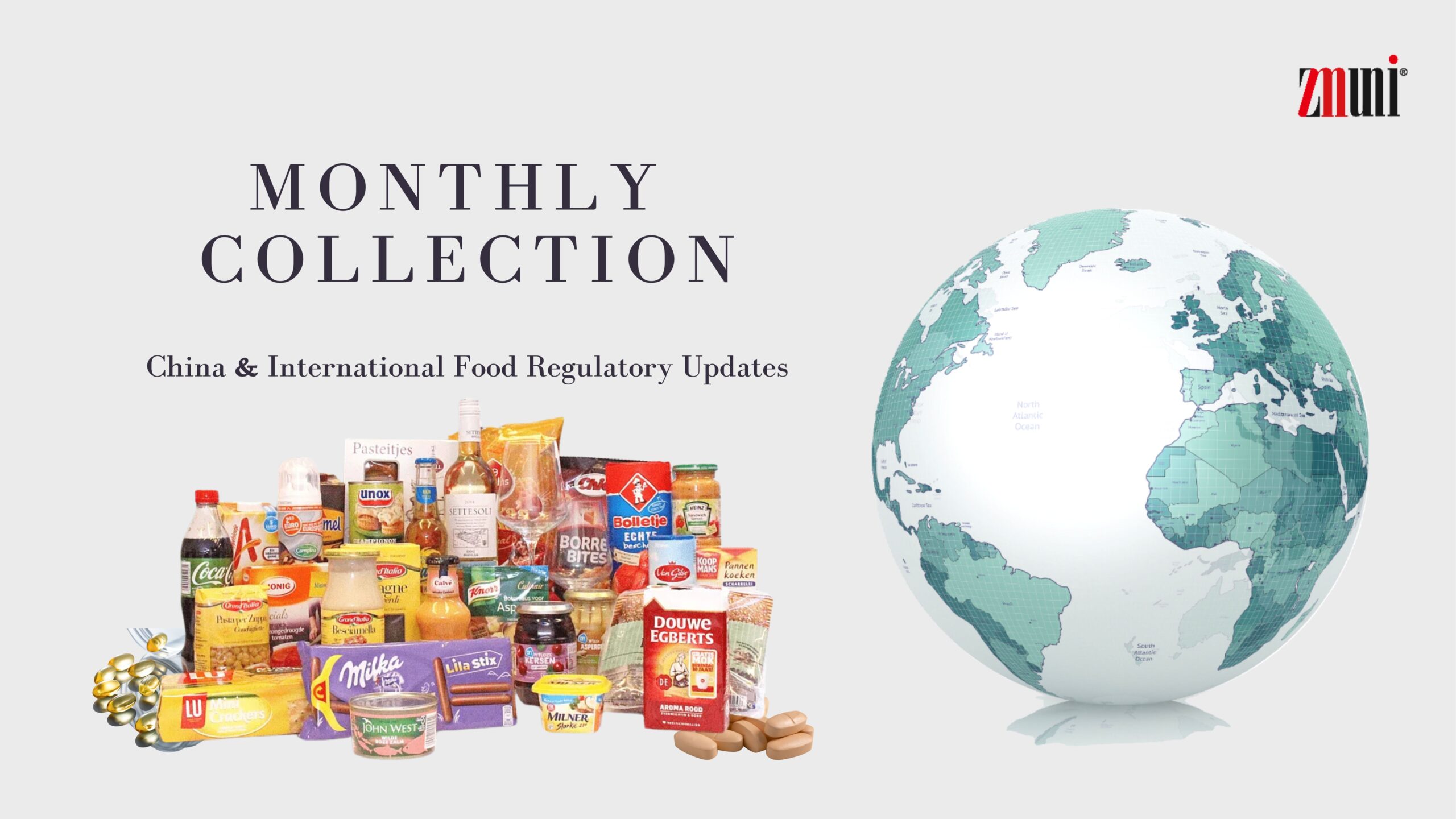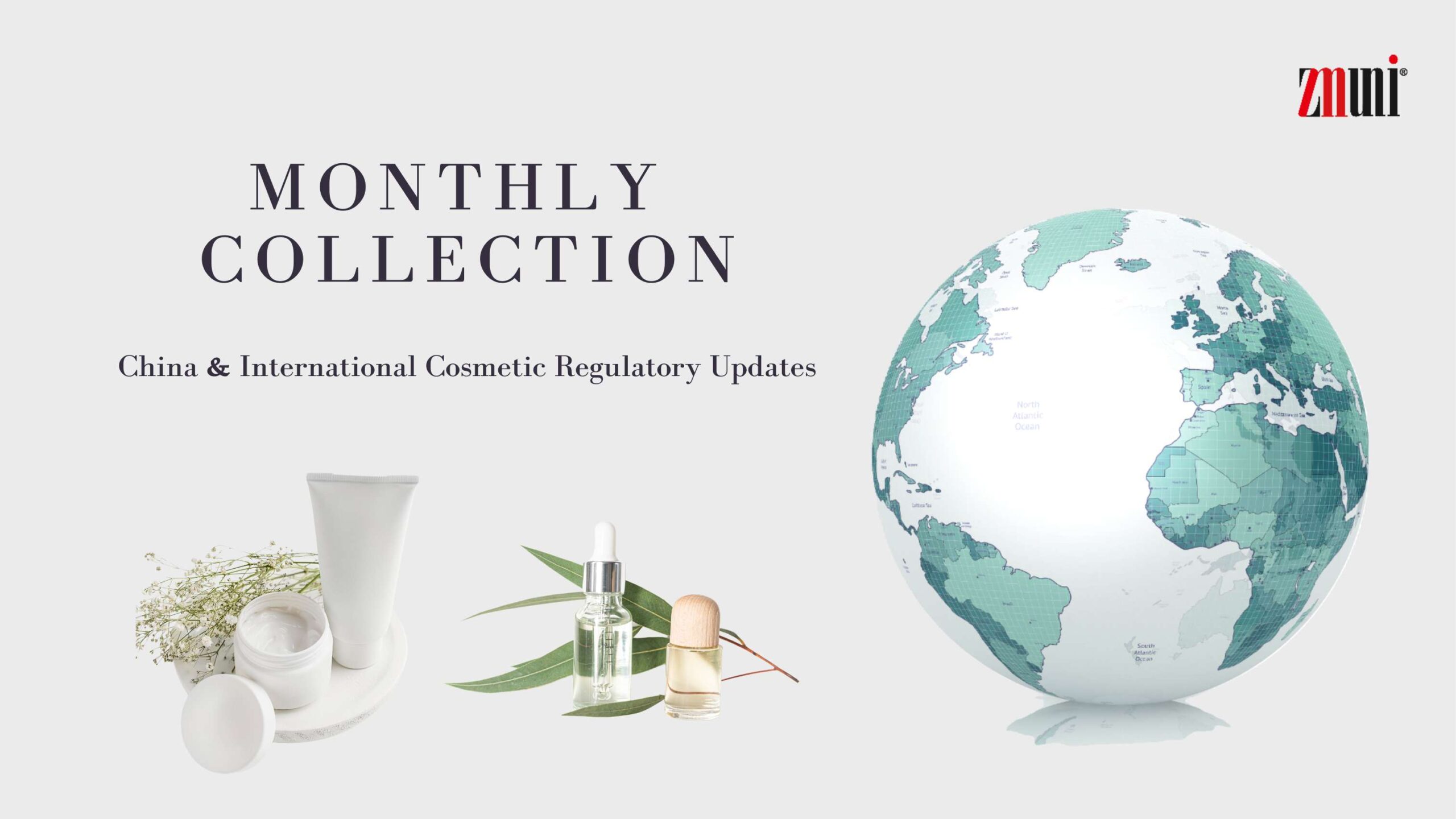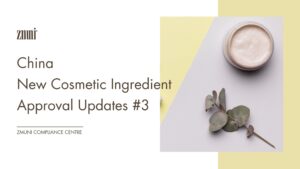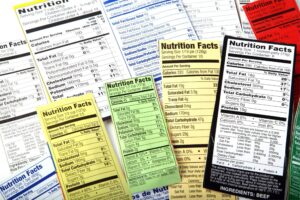+86 571 8659 2517
+86 180 5841 8258
info@zmuni.com

On April 10, 2025, China's National Institutes for Food and Drug Control (NIFDC) released the Information on the Use of Some Ingredients Included in the Index of International Cosmetic Safety Assessment Data, along with a corresponding Q&A. Developed in response to industry needs, this document builds upon the Ingredient Usage Information of Marketed Products released by NIFDC on February 9, 2025. It focuses on ingredients listed in the Index of International Cosmetic Safety Assessment Data that are frequently used in registered or notified cosmetics in China, particularly those lacking definitive safety conclusions or subject to usage restrictions. The update

This article focuses on summarizing the regulatory developments related to food within China and internationally in March 2025, with an emphasis on updates in regulations concerning new food ingredients, food additives, feed additives, and health foods. China Food Regulatory Updates Three New Food On March 21, 2025, China National Center for Food Safety Risk Assessment (CFSA) released a notice seeking public comments on eight new food additive varieties. Comments are welcome until April 20, 2025. For more details, see here. On March 21, 2025, China CFSA issued a public consultation on four new food ingredients: Lutein esters, D-Psicose/D-Allulose, Bifidobacteriumanimalis subsp.lactis BLa80,

The global cosmetics regulatory environment continues to evolve. To help businesses stay updated with regulatory changes, ZMUni Compliance Center regularly releases a monthly recap of global cosmetics regulations. This article covers the regulatory developments related to cosmetics within China and globe in March 2025, with an emphasis on updates in cosmetic ingredient, cosmetic notification, labeling, etc. China Cosmetic Regulatory Updates New Cosmetics Ingredients (NCI) Notification In March 2025, 11 new cosmetic ingredients were notified with the China National Medical Products Administration (NMPA). They include: Ingredient Name in CN and EN Notification No. Notifier 铁皮石斛(DENDROBIUM OFFICINALE)培养物 20250020 沈阳科康科技有限公司 HDI/二 C12-14 醇酒石酸酯/氢化二聚亚油醇共聚物 Hdi/di-c12-14 Alkyl Tartrate/hydrogenated Dilinoleyl Alcohol Copolymer 20250021

As of March 2025, 237 new cosmetic ingredients (NCIs) have been successfully notified in China, with one ingredient approved for registration. In Q1 2025, 30 NCIs were newly notified. With the implementation of new regulations in February, innovation in cosmetic ingredients is expected to accelerate, and the total number of notified NCIs in 2025 is likely to exceed 100. Overview In Q1 2025, no new cosmetic ingredient (NCI) have been publicly registered yet, but the number of NCI notifications continues to rise. According to data from China’s National Medical Products Administration (NMPA), a total of 30 NCIs were notified this quarter,

On March 27, 2025, China National Institutes for Food and Drug Control (NIFDC) released the Technical Guidelines for Updating New Cosmetic Ingredient Notification Informarion (Draft for Comments) for public consultation. The deadline for public feedback is April 15, 2025. The Draft Guidelines applies to the update of notification information for NCI within their 3-year safety monitoring period, while registered NCI may also refer to this Guidelines. Updates are prohibited within the last six months of the monitoring period, and any identified safety risks must be reported immediately. The Draft Guidelines categorizes permissible updates into three levels based on risk assessment: 1. Routine updates to self-maintained information. 2. Updates to company-related information,

On March 27, 2025, China's National Health Commission (NHC) and State Administration for Market Regulation (SAMR) jointly released the new national standard for food labeling - GB 7718-2025 General Standard for the Labeling of Prepackaged Food. This new standard will take effect on March 16, 2027. The release and revision history of GB 7718 GB 7718 - 2004 GB 7718 - 2011 Public consultation: 2018, 2019, 2024 (twice) GB 7718 - 2025 ZMUni Compliance Centre has distilled eight key points for global stakeholders as follows: 1. Mandatory labelling of eight major allergenic substances Eight types of allergenic substances (cereals containing gluten, crustaceans, fish,

On March 27, 2025, China's National Health Commission (NHC) and the State Administration for Market Regulation (SAMR) jointly issued Announcement No. 2 of 2025, introducing 50 new national food safety standards and nine amendments. Among them, two key standards focus on food labeling: GB 7718-2025 National Food Safety Standard General Standard for the Labeling of Prepackaged Food and GB 28050-2025 National Food Safety Standard General Rules for Nutrition Labeling of Prepackaged Foods. A day earlier, on March 26, 2025, SAMR officially released the Administrative Measures for Supervision of Food Labeling, further strengthening regulatory oversight. All three regulation and food standards are set

On March 21, 2025, the National Center for Food Safety Risk Assessment (CFSA) issued a public consultation on four new food ingredients: Lutein esters, D-Psicose/D-Allulose, Bifidobacteriumanimalis subsp.lactis BLa80, and Bifidobacterium longum subsp. infantis LMG1158. The consultation period will end on April 20, 2025. Proposed Approval of D-Allulose: Produced by Two Methods D-Allulose is a six-carbon ketose sugar that occurs naturally in small amounts in foods such as figs, kiwifruits, and wheat. The product under consideration, D-Allulose, is produced through two methods: microbial fermentation and enzymatic conversion. Microbial fermentation: Glucose or sucrose is fermented by Escherichiacoli AS10, followed by purification,
+86 571 8659 2517
+86 180 5841 8258
info@zmuni.com